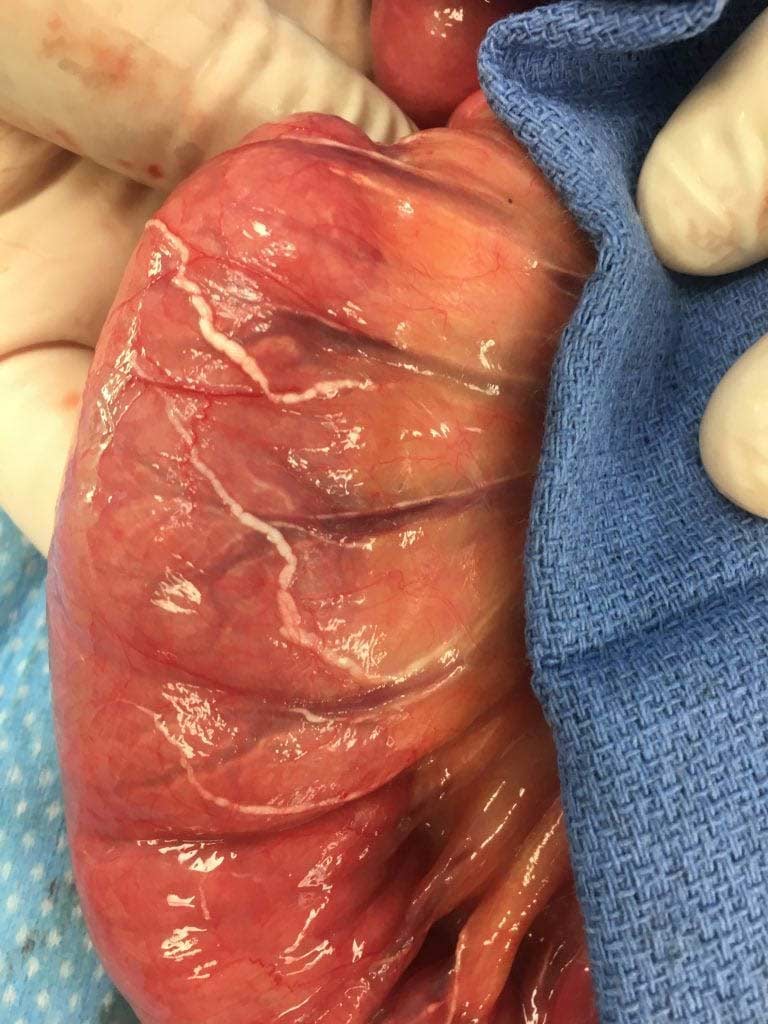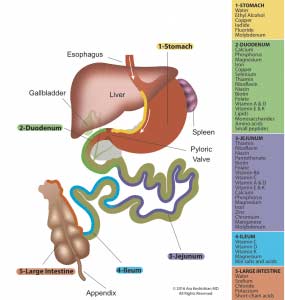Category: small intestine
Lymphatic Channels
May 22, 2018 8:21 am
We are all aware of the arterial and venous systems. Arteries take the oxygenated blood from the heart to the organs and the veins take the blood back to the lungs to unload the carbon dioxide and reload oxygen to be taken back to the organs. In addition to the arterial and venous vascular systems, we also have the lymphatic channels that flow into the lymphatic system.
The Lymphatic channels and system may be new to some, however, it is the third vascular network that is much less defined. The Lymphatic system collects fluids that has left the artierial/venous vascular system along their travel outlined above and take it back to the venous system. The lymphatic vessels transport this fluid to the lymph nodes throughout the body where the nodes filter the fluid of bacteria and harmful substances. Eventually, the fluid makes it way back to the venous system via the Superior Vena Cava. Additionally, Lymphatics collect the lipids within the GI tract and transport them to the venous system for metabolism. Most of the time these serosal lymphatic vessels are very small and hard to notice on the bowel.
Example of Lymphatic channels
The following image is in a patient who had small bowel obstruction. The obstruction had resulted in vascular congestion at the base of the mesentery. The congestion had effected the low pressure system of the veins and the lymphatics disproportionately more that the arterial system. The white-milky tubular structures are the lymphatic channels filled with lipids.
There are three layers to the small intestinal lymphatic system, in the villi, submucosal and serosal layers and has the unique ability to transport absorbed intra-lumenal nutrients. There is a need for further research in the areas of health, obesity and disease in regards to the lymphatic system.
Small Intestine
September 25, 2016 10:27 am
The small intestine is a long tubular organ that is approximately 460-1000cm in adults. It is divided into three sections, Duodenum, Jejunum, and Ileum. The surface area is greater than one might think due to the folds, villi, and microvilli. The surface area is approximately 30 square meters. Most of human digestion and absorption takes place within these three sections of small intestine.
The diagram of normal anatomy absorption in the small intestine is pictured to the right. It is color coded based on the area of the digestive tract the absorption takes place. You may also view here: master-normal-anatomy-with-text
Overview
Length: 22 ft. (6.7 m)
Width: 1 inch
pH: neutral or slightly alkaline (5-7)
- Steps:
- Neutralization in stomach, where enzymes act to breakdown food
- Digestion through greater breakdown with help of bile and pancreatic juices
- Absorption through assimilation of digested food, vitamins, and salts. Nutrients are taken into the bloodstream via specialized epithelial cells to the liver through the hepatic portal vein.
Duodenum
Length: 1 ft. (0.30 m)
pH~ 5
- Main site of breakdown
- C shaped turn with 4 parts: superior, descending, inferior, ascending
- Mixes food (now in form of chyme) with bile and other digestive juices
- Passes chyme through duodenojejunal flexure which contains suspensory muscle to widen the duodenal angle and increase movement.
Jejunum
Length: 8.2 ft. (2.5 m)
pH~ 6
- Coiled, vascular tube that contains a thick intestinal wall
- The wall contains epithelial projections called intestinal villi
- Smaller projections in the villi, called microvilli work to:
- project specialized transport cells called enterocytes
- increase surface area
- allow more absorption
Ileum
Length: 11.5 ft. (3.5 m)
pH~ 7
- Less vascularized and thinner intestinal wall
- Absorbs nutrients that preceding sections of the gut did not
- particularly works with vitamin B12 and bile salt absorption
- Connects to the colon through the ileocecal valve for further breakdown.
The following are Member Exclusive documents. Please be aware of your terms of use of these items.
Click for: Duodenal Switch Absorption & Anatomy (1.2 MB)
Click for:RNY Absorption Anatomy (1.1 MB)
References:
- Campbell NA, Reece JB, Mitchell LG. Biology. 5th ed. Benjamin-Cummings Pub Co. 1999-2002; 802-805.
- Ovesen L, Bendtsen F, Tage-Jensen U, Pedersen NT, Gram BR, Rube SJ. Intraluminal pH in the stomach, duodenum, and proximal jejunum in normal subjects and patients with exocrine pancreatic insufficiency. Gastroenterology. 1986; 90(4): 958-62.
- Stevens C. E., and Hume, I. D. 1995.Comparative Physiology of the Vertebrate Digestive System. 2nd ed. New York: Cambridge University Press.
- Schmidler C. Anatomy and Function of the Digestive System. Healthpages.org. 2016.
- Weight loss Medications compared to surgery February 20, 2024
- SIPS-SADI and ASMBS December 31, 2023
- Survey December 16, 2023
- Long Term Outcome Survey December 1, 2023
- Weight Loss Injection May 10, 2023


